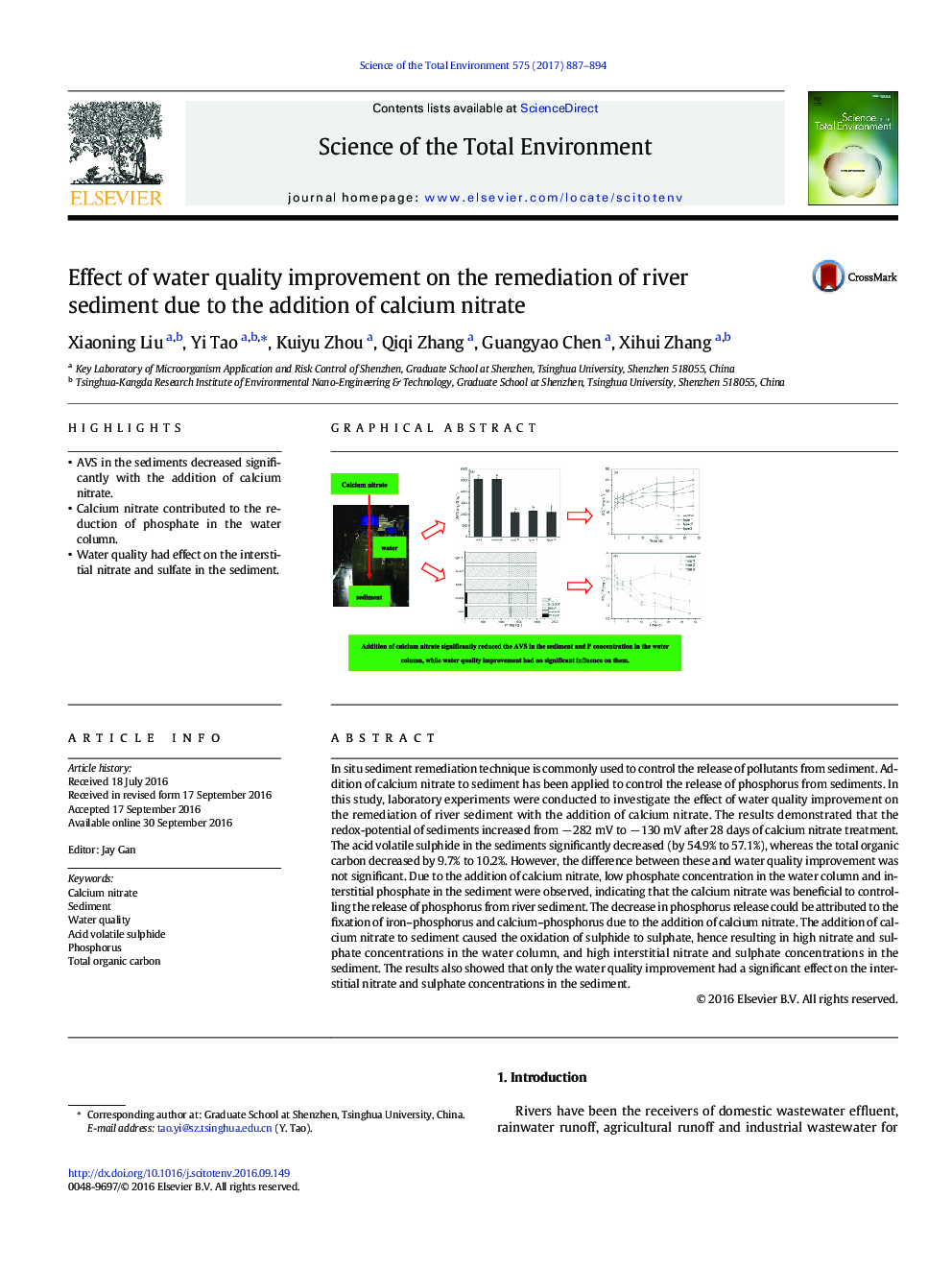| Article ID | Journal | Published Year | Pages | File Type |
|---|---|---|---|---|
| 6319629 | Science of The Total Environment | 2017 | 8 Pages |
â¢AVS in the sediments decreased significantly with the addition of calcium nitrate.â¢Calcium nitrate contributed to the reduction of phosphate in the water column.â¢Water quality had effect on the interstitial nitrate and sulfate in the sediment.
In situ sediment remediation technique is commonly used to control the release of pollutants from sediment. Addition of calcium nitrate to sediment has been applied to control the release of phosphorus from sediments. In this study, laboratory experiments were conducted to investigate the effect of water quality improvement on the remediation of river sediment with the addition of calcium nitrate. The results demonstrated that the redox-potential of sediments increased from â 282 mV to â 130 mV after 28 days of calcium nitrate treatment. The acid volatile sulphide in the sediments significantly decreased (by 54.9% to 57.1%), whereas the total organic carbon decreased by 9.7% to 10.2%. However, the difference between these and water quality improvement was not significant. Due to the addition of calcium nitrate, low phosphate concentration in the water column and interstitial phosphate in the sediment were observed, indicating that the calcium nitrate was beneficial to controlling the release of phosphorus from river sediment. The decrease in phosphorus release could be attributed to the fixation of iron-phosphorus and calcium-phosphorus due to the addition of calcium nitrate. The addition of calcium nitrate to sediment caused the oxidation of sulphide to sulphate, hence resulting in high nitrate and sulphate concentrations in the water column, and high interstitial nitrate and sulphate concentrations in the sediment. The results also showed that only the water quality improvement had a significant effect on the interstitial nitrate and sulphate concentrations in the sediment.
Graphical abstractDownload high-res image (240KB)Download full-size image
